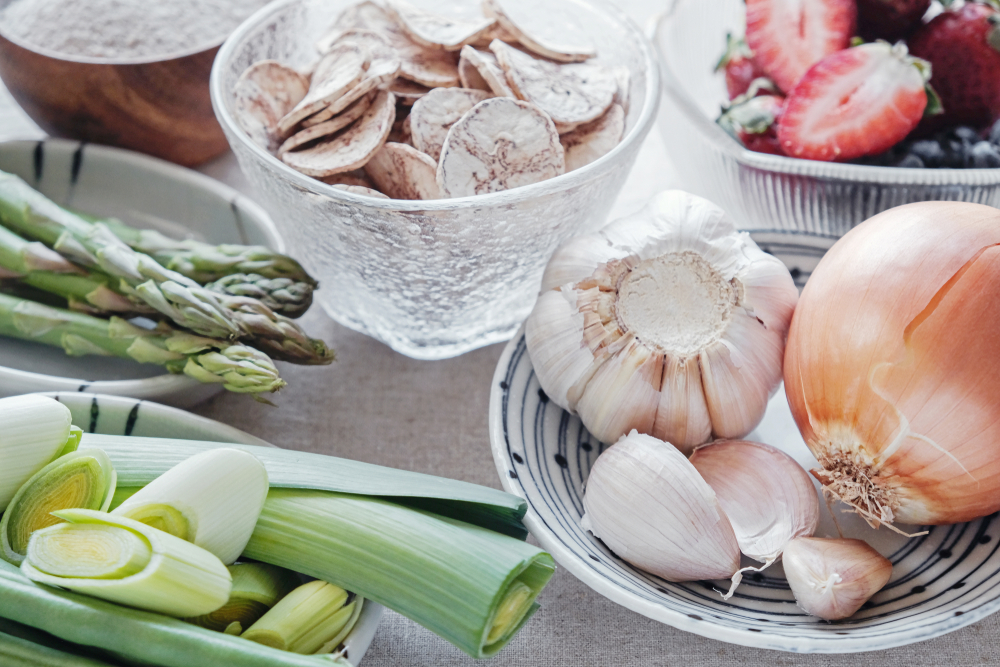Don’t Take a Probiotic Unless You Do This
Dr. Phil Roberts|January 31, 2020

Last week, I talked about the turf war that’s raging inside the gut and how probiotics help keep it all balanced.
When the gut is in a state of equilibrium amongst the various strains of beneficial bacteria, digestion works like it should…
Vitamins and minerals are properly metabolized…
The immune system is well armed for a fight against invading microorganisms…
And vital nutrients, like vitamins B and K, get produced…
But there are many reasons the whole process can fall apart…
Follow the Leader
As we get older, the gut microbiota tends to devolve and grow less diverse.
While this is a natural development, it can be sped up by a lack of variety in the diet.
What’s more, this de-evolution has been shown to happen in lockstep with a weakening immune system, general declines in health and rapid aging.
It’s as if all of the systems in the body are forever playing a game of follow-the-leader… with the gut out in front.
One of the easiest ways to keep the gut happy (and all of the processes it supports) is by feeding it probiotics.
This can be in the form of fermented foods, yogurt, kombucha, and pickles or the like.
You can also take the easy route by heading to your local vitamin shop or health food store and picking up a probiotic supplement.
But you can get more benefit from probiotics when you add in prebiotics…
Job Well Done
Probiotics contain the actual beneficial bacteria that does the heavy lifting in the gut.
A probiotic supplement contains living microorganisms that are beneficial to the microbiome.
But like all living organisms, probiotics need fuel. And that’s exactly where prebiotics come in.
Prebiotics are like a little reward to microorganisms in the gut for a job well done.
They don’t actually contain bacteria. They are mostly made up of carbohydrates that the body is unable to digest.1
It’s a symbiotic relationship, which, incidentally, is probably why food sources with both prebiotics and probiotics are called synbiotics.
By pairing the two together (which is called microbiome therapy), probiotics work even harder because they become stronger and healthier.2
Prebiotics are found naturally in a bunch of delicious foods.
- Garlic. This pungent herb has a high dose of a prebiotic fiber called inulin. This is considered good eatin’ by the beneficial bacteria. It improves fat digestion by increasing the level of bile produced. It also has a healthy dose of fructooligosaccharides that stimulate the growth of healthy bacteria.3
- Onions. Why are the stinky ones so good for us? Like garlic, onions also have a large dose of inulin and that $10 dollar word I just mentioned. They also boost the immune system by increasing the production of nitric oxide.
- Asparagus. This vegetable contains a large amount of good bacteria-promoting inulin. It also has a lot of antioxidants that can prevent inflammation in the gut.4
- Bananas. They’re tasty. They travel well because they come wrapped in natural packaging. And they’re loaded with a prebiotic fiber that increases levels of heathy bacteria.5 They also contain a little bit of inulin to boot.
- Apples. One a day, right? This fruit contains pectin, which increases levels of short-chain fatty acids that feed the good guys in the gut. Pectin also has a penchant for attacking and wiping out colonies of harmful bacteria.6
- Oats. We’re not talking about that highly processed instant oatmeal stuff that’s loaded with sugar. Ideally, you should be eating whole oats (aka groats). With these, the bran and germ are still intact, making this style of oat very high in fiber and nutrients. Most importantly, they’re high in beta-glucan, which beneficial gut bacteria absolutely loves.7 Admittedly, whole oats do take extra time to prepare, so rolled and steel-cut oats are good for you as well… just not quite as good for you.
- Cocoa. Put down the Hershey bar. Here we’re looking to maximize the amount of cocoa solids. The more solids, the higher the levels of flavonoids.8 While food labels don’t typically mention flavonoids by name, chocolate labels do usually mention the percentage of cocoa solids. For reference, dark chocolate usually contains between 40% and 80% cocoa solids. Milk chocolate on the other hand is in the 5% to 7% range. You want to maximize the level of flavonoids because they offer a big boost to healthy bacteria.9
If getting prebiotics into the system naturally isn’t doable because of dietary restrictions, prebiotic supplements are readily available at your average vitamin shop. (I’ve always found Life Extension to be a great supplier with excellent customer service.)
Just a few recommendations if you want to try them out…
Taking these about 30 minutes before a meal or with a meal will enhance survival of the probiotics. Healthy fats also have been show to enhance absorptive results.10
I like to recommend nighttime consumption, as this allows them to get into the gut and feed the healthy bacteria while the body is resting.
But the most important factor is to take them consistently around the same time every day.
Developing a healthy pattern will keep the gut in healthy shape and do wonders for your overall health…
It’s the best way to heal yourself from within.
And if you have any questions about gut health, prebiotics or probiotics, send an email here.
References
- https://www.mayoclinic.org/healthy-lifestyle/consumer-health/expert-answers/probiotics/faq-20058065
- https://www.mayoclinic.org/prebiotics-probiotics-and-your-health/art-20390058
- https://pubs.rsc.org/en/content/articlelanding/2015/fo/c4fo01082e/unauth#!divAbstract
- https://www.ncbi.nlm.nih.gov/pubmed/26935854
- https://www.ncbi.nlm.nih.gov/pubmed/23609775
- https://www.ncbi.nlm.nih.gov/pubmed/20089145
- https://www.ncbi.nlm.nih.gov/pubmed/26511097
- https://www.ncbi.nlm.nih.gov/pmc/articles/PMC4696435/
- https://www.ncbi.nlm.nih.gov/pubmed/21068351
- https://www.ncbi.nlm.nih.gov/pubmed/22146689



